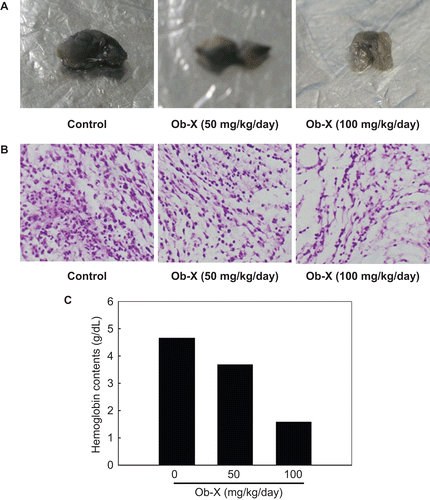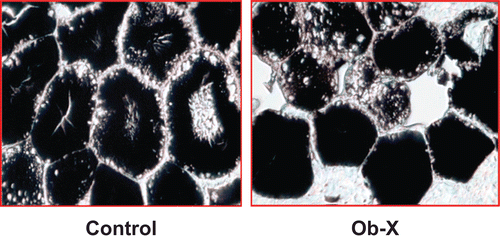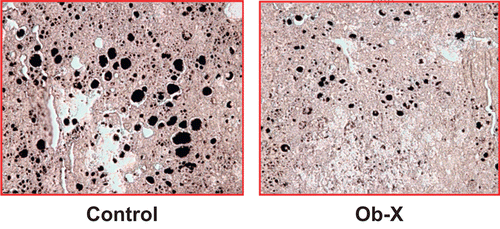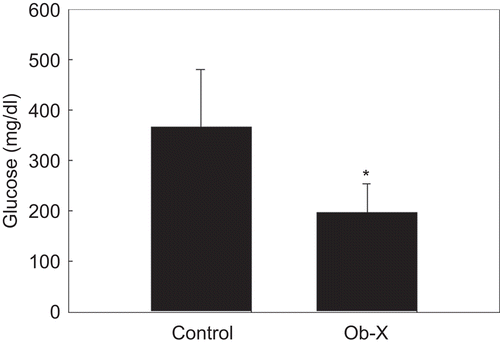Figures & data
Figure 1. Effects of Ob-X on in vivo angiogenic activity. (A) Matrigel plugs removed from control group or Ob-X group were photographed. (B) Sections of each matrigel plug stained with H&E were examined by light microscopy (100×). (C) Hemoglobin contents in matrigel plugs.

Figure 2. Effects of Ob-X on body weight gain and visceral adipose tissue mass in genetically obese ob/ob mice. Ob/ob mice (n = 8/group) received daily oral administration of saline (control group) or Ob-X at a dose of 0.5 mg/mouse/day (Ob-X group) for 5 weeks. All values are expressed as the mean ± SD. (A) Body weight gains at the end of the treatment period were statistically significant between the control group and the Ob-X group, (P < 0.05). (B) Mesenteric fat mass was measured. *Significantly different from control group, P < 0.05. (C) Visceral fat mass was apparently leaner in the Ob-X group than in the control group.

Figure 3. Light microscopic analysis of adipocytes in visceral adipose tissue of ob/ob mice. Adipose tissues were derived from mice receiving daily oral administration of saline (control group) or Ob-X at a dose of 0.5 mg/mouse/day (Ob-X group) for 5 weeks. Representative photographs of osmium tetroxide-stained sections of adipose tissues (original magnification 400×).

Figure 4. Effects of Ob-X on hepatic lipid accumulation in genetically obese ob/ob mice. Livers were derived from mice receiving daily oral administration of saline (control group) or Ob-X at a dose of 0.5 mg/mouse/day (Ob-X group) for 5 weeks. Representative photographs of osmium tetroxide-stained sections of livers (original magnification 200×).

Figure 5. Effects of Ob-X on serum glucose levels in genetically obese ob/ob mice. Ob/ob mice (n = 8/group) received daily oral administration of saline (control group) or Ob-X at a dose of 0.5 mg/mouse/day (Ob-X group) for 5 weeks. All values are expressed as the mean ± SD. *Significantly different vs. control group, P < 0.05.
